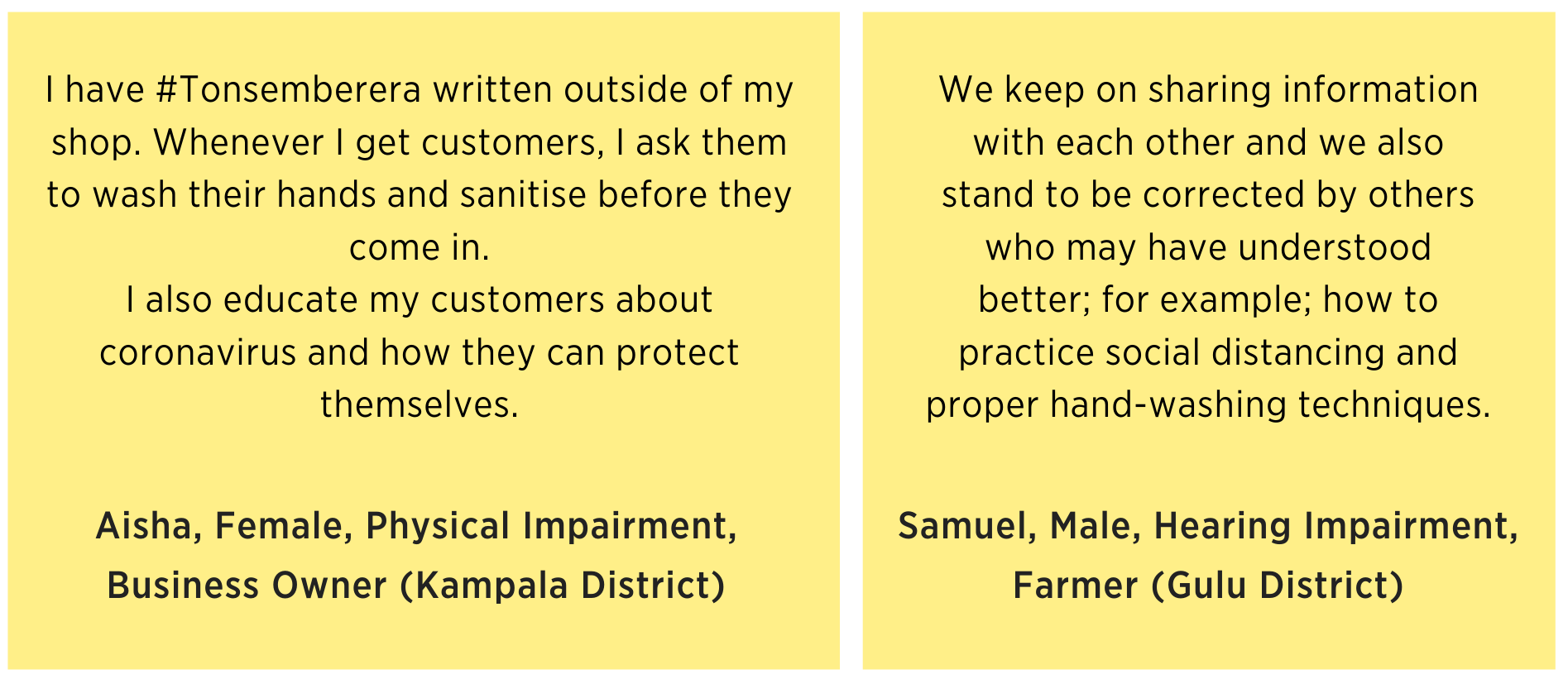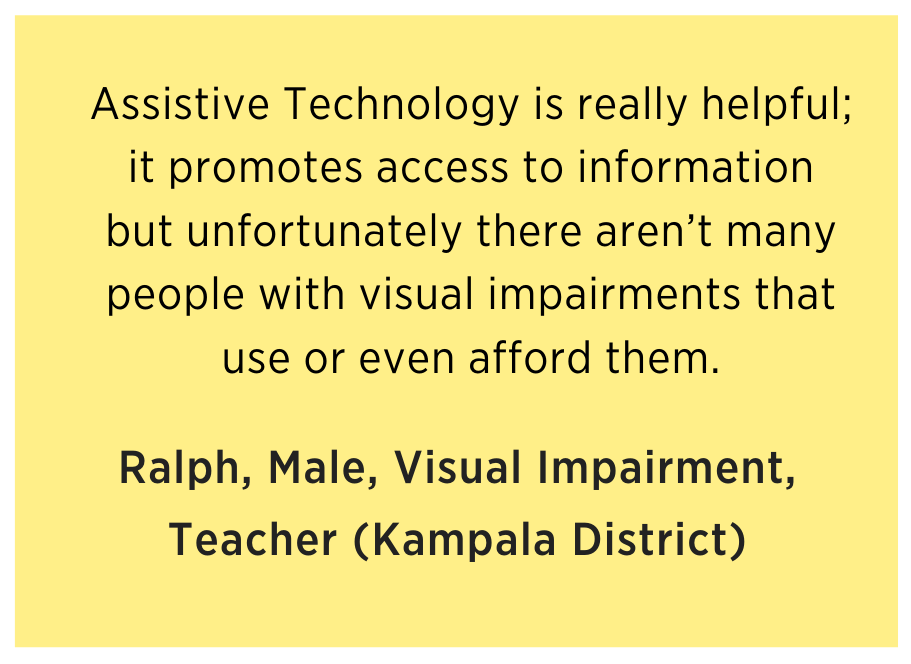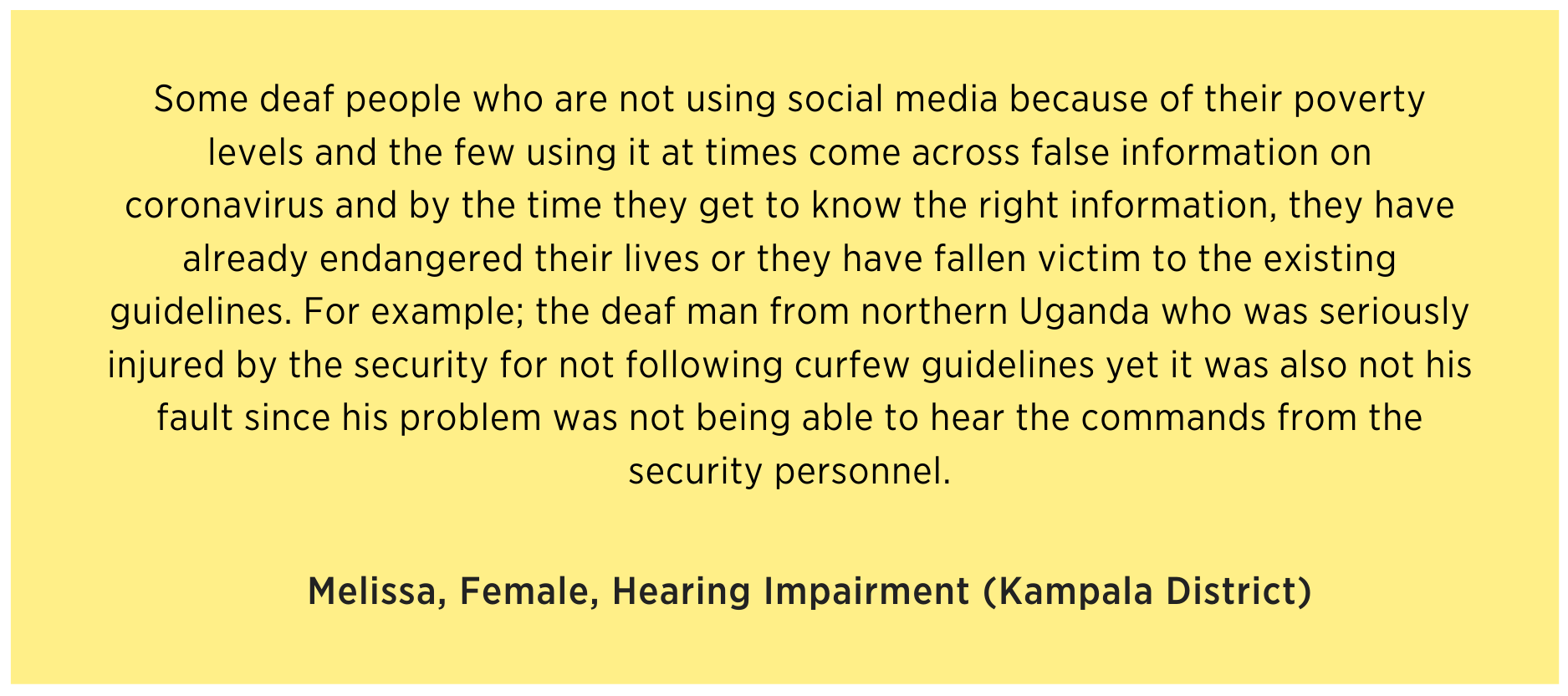Poll 2: Knowledge and awareness on Coronavirus among persons with disabilities
Since the start of the coronavirus outbreak, the airwaves and our newsfeeds have been filled with information about the pandemic. From causes, prevention, diagnosis and treatment to updates on the latest developments worldwide. This too, however, has caused a contagion of misinformation. Traditional media like TV, Radio and newspaper, that majority of Ugandans still rely on to get credible information, have taken steps to increase accessibility for people with disabilities particularly those with hearing and visual impairments. However, many of these efforts have still fallen short.
In the poll question below, we sought to find out from the general public if the information they have received about coronavirus has increased their knowledge and awareness on the disease and if they felt confident that they knew enough to protect themselves and curb the spread.
Episode: Coronavirus in your household
Do you know what you need to do to stay safe and reduce the spread of coronavirus?
- Yes. I know what to do, the information is clear.
- No. I need more information
- I am confused because of different messages from different sources
- I don’t understand the information
Results and Discussion

Positive impact of the communication campaign on coronavirus
54% of respondents with disabilities (or caretakers of people with disabilities) and 50% of respondents without disabilities reported that they knew how to protect themselves based on the information they have received. This can be attributed to the communication campaign that has been carried out by the Ministry of Health, media sources, telecom companies and other bodies (the #Tonsemberera (Don’t come near me) campaign). Even the entertainment industry has joined in; local artists including the world famous Bobi Wine have since released songs about the disease, stressing the precautionary measures.

The constant need for more information
COVID-19 is a new strain of coronavirus that, before 2019, had never presented in humans. Very little was known about the virus by the time it became a global pandemic. As scientists continue to study the virus, more details about its spread and precautionary measures emerge; sometimes contradicting earlier advice. For example; at the start of the pandemic, the use of face masks was only recommended for those who showed flu-like symptoms. With more research, it has emerged that if the majority of people in a population wore face masks, this could slow the spread significantly (CDC, 2020).
This contradictory information and ever-changing advice could explain why 17% of respondents with disabilities (or caretakers of people with disabilities) and 15% of respondents without disabilities felt that they needed more information.
Contradictory information prompts confusion
16% of respondents with disabilities (or caretakers of people with disabilities) and 17% of respondents without disabilities reported feeling confused by different messages from various sources. This can be attributed to the fear and panic caused by the pandemic that has fueled misinformation and conspiracy theories. Intentional disinformation has been spread through social media, text messaging and mass media including the tabloids and conservative forums. These usually aim to generate panic, push their agendas and sow distrust for certain groups, nationalities and countries. There is a great need for information in these times; however, the risk of misinformation is just as high resulting in confusion in the masses as seen by these poll results.

Inaccessible information/ little comprehension
13% of respondents with disabilities (or caretakers of people with disabilities) and 12% of respondents without disabilities reported that they did not understand the information being put out about the virus. This could be accounted for by inaccessibility of information due to illiteracy and/or impairment. Despite tremendous strides taken by the government to ensure education for all, 27.8% of the population is still illiterate (UBOS, 2014); limiting access to information for this group to radio (in their respective local languages) and its availability.
However, all this depends on one having a radio, TV, screen reader software or the availability of Brailled information (and one being literate enough to read it). Generally, very few attempts are made to make information accessible to those with intellectual impairments outside of their advocacy groups.Access to information through the internet or social media is contingent on one having a phone with internet access, money to buy data to access the internet and paying OTT tax to gain access to some social media sites.

All these different scenarios and the varying challenges they present at individual level could explain why for a certain percentage of respondents, the information provided has not been clear enough.

